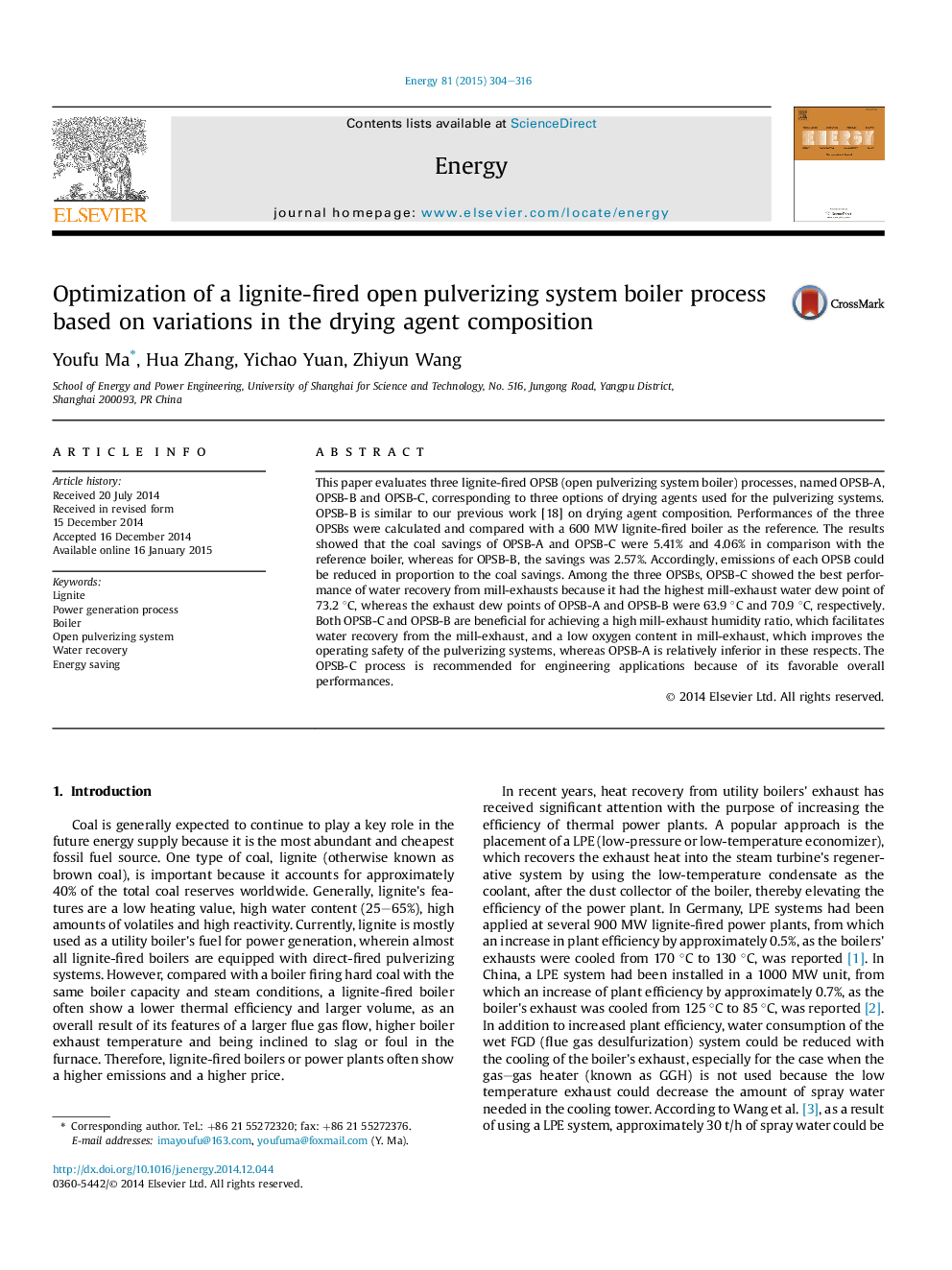| Article ID | Journal | Published Year | Pages | File Type |
|---|---|---|---|---|
| 8075692 | Energy | 2015 | 13 Pages |
Abstract
This paper evaluates three lignite-fired OPSB (open pulverizing system boiler) processes, named OPSB-A, OPSB-B and OPSB-C, corresponding to three options of drying agents used for the pulverizing systems. OPSB-B is similar to our previous work [18] on drying agent composition. Performances of the three OPSBs were calculated and compared with a 600 MW lignite-fired boiler as the reference. The results showed that the coal savings of OPSB-A and OPSB-C were 5.41% and 4.06% in comparison with the reference boiler, whereas for OPSB-B, the savings was 2.57%. Accordingly, emissions of each OPSB could be reduced in proportion to the coal savings. Among the three OPSBs, OPSB-C showed the best performance of water recovery from mill-exhausts because it had the highest mill-exhaust water dew point of 73.2 °C, whereas the exhaust dew points of OPSB-A and OPSB-B were 63.9 °C and 70.9 °C, respectively. Both OPSB-C and OPSB-B are beneficial for achieving a high mill-exhaust humidity ratio, which facilitates water recovery from the mill-exhaust, and a low oxygen content in mill-exhaust, which improves the operating safety of the pulverizing systems, whereas OPSB-A is relatively inferior in these respects. The OPSB-C process is recommended for engineering applications because of its favorable overall performances.
Related Topics
Physical Sciences and Engineering
Energy
Energy (General)
Authors
Youfu Ma, Hua Zhang, Yichao Yuan, Zhiyun Wang,
